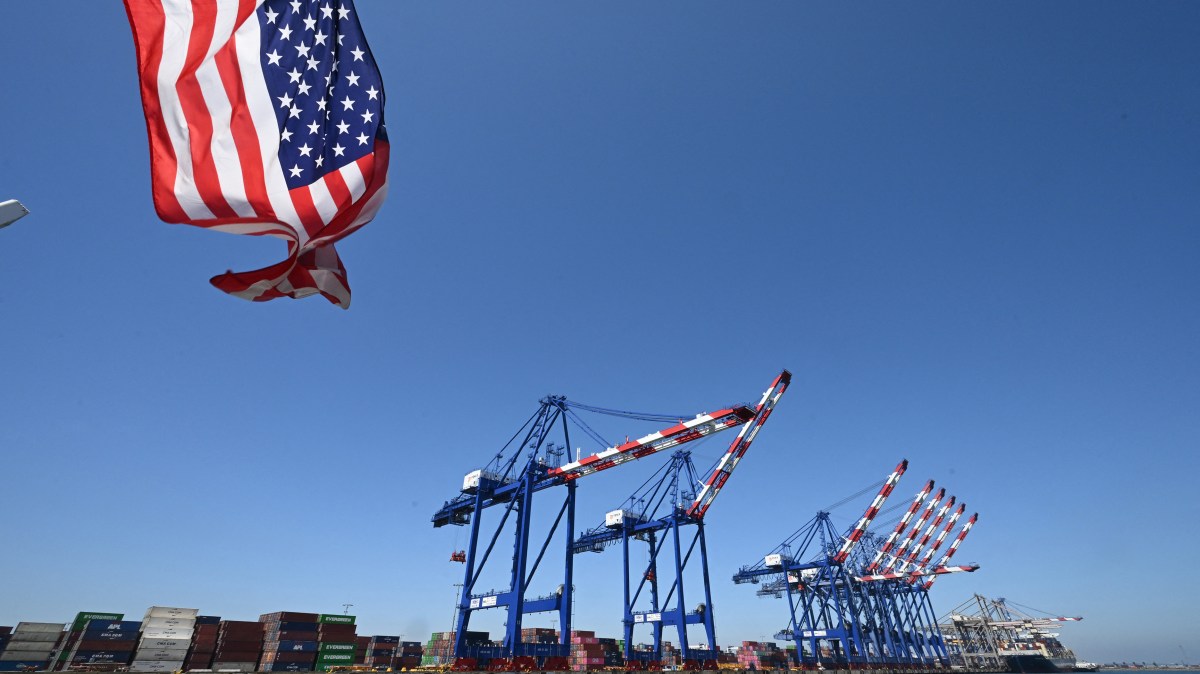US and European stock markets retreated from record highs after disappointing American jobs figures raised fears that President Trump’s tariffs are damaging the world’s largest economy.
Wall Street led global equities lower on Friday as traders dumped stocks and the dollar and bought government bonds after weak US jobs figures in July and revisions to previous months. Payrolls rose by 73,000 last month, lower than the 104,000 expected by analysis and revisions wiped 258,000 off estimates for May and June.
Separate data from the manufacturing sector was also worse than forecast. Activity contracted at the fastest rate in nine months and a measure of employment in factories recorded the worst monthly reading since 2020.
• How Trump is delivering his pledges after 200 days
A consumer sentiment survey for July from the University of Michigan showed American households were not as upbeat as economists had expected.
The data suggests the US economy may be in the throes of a big slowdown, raising the chance of interest rate cuts from next month and correcting the recent bull run in US stocks. The weak labour market data and a salvo of new White House trade tariffs combined to push indices sharply lower on the day and over the week.
The S&P 500 fell by 2.4 per cent over thew five days while the Nasdaq lost 2.2 per cent, the worst weekly drop for both since late May. The Dow Jones industrial average suffered its worst week since early April with a fall of 2.9 per cent.
France’s Cac 40 index was the biggest loser in Europe, shedding more than 3.1 per cent, while the FTSE 100 declined 1 per cent and the domestically focused FTSE 250 fell 1.2 per cent. Germany’s Dax index dropped 2.8 per cent after the White House finalised the terms of a 15 per cent minimum tariff on European goods exports.
Friday’s economic data provide some of the clearest evidence that Trump’s tariff threats have been hurting the US private sector and the jobs market more than estimated since April’s “liberation day” announcement. The figures coincided with the end of the White House’s August 1 deadline to apply tariffs on the rest of the world. The effective tariff rate has jumped from just over 2 per cent to about 18 per cent — the highest since the 1930s.
• Trump calls on Fed to cut rates after US growth surges to 3%
Money poured into US government bonds, which benefit from lower interest rates. The two-year Treasury yield, which is sensitive to changes in monetary policy, fell 0.22 percentage points to 3.72 per cent, a five-week low. The 10-year yield, a proxy for government borrowing costs, shed 0.12 percentage points to 4.24 per cent. Yields fall when bond prices rally.
UK government bonds enjoyed a more modest rally. Ten-year yields fell 0.06 percentage points and two-year gilts rallied by 0.08 percentage points.
The dollar fell by 1 per cent against other trading currencies and lost 0.4 per cent against the pound to $1.33. The greenback had been on course for its best week since 2022 but reversed most of its gains on fears that the US economy is slowing more than expected. The euro, which had fallen at the start of Friday on the EU-US tariffs deal, ended 1.25 per cent higher on the back of dollar selling.
Traders increased their bets on the Federal Reserve’s first interest rate cut of the year coming in September, putting a 75 per cent probability of monetary easing next month, up from just over 20 per cent at the start of the week. Markets think the Fed will cut again in October after the central bank kept borrowing costs unchanged and said it was sanguine about the state of the jobs market on Wednesday.
